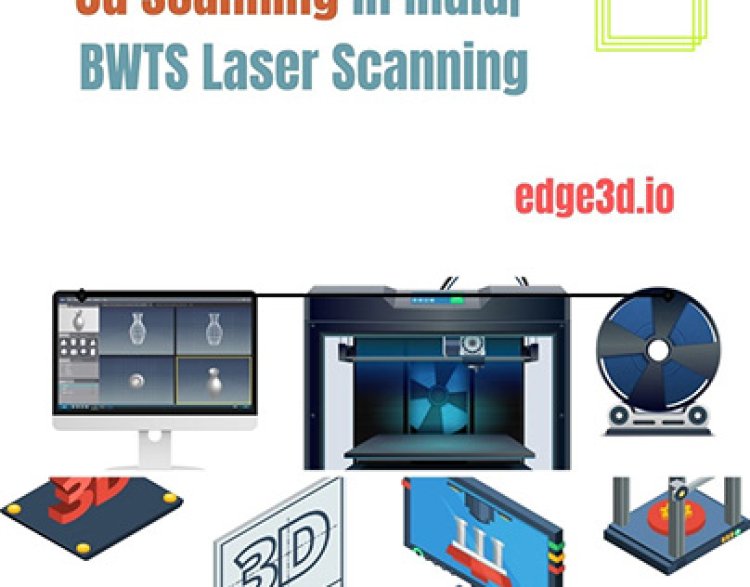The Rise of 3D Rendering Services in India: Trends and Innovations
From real estate and architecture to product design and entertainment, the applications of 3D rendering are vast and varied. This blog explores the trends and innovations fueling the rise of 3D rendering services in India.
Share this Post to earn Money ( Upto ₹100 per 1000 Views )

In recent years, India has emerged as a global hub for 3D rendering services, driven by advancements in technology, increasing demand from various industries, and a growing pool of skilled professionals. From real estate and architecture to product design and entertainment, the applications of 3D rendering are vast and varied. This blog explores the trends and innovations fueling the rise of 3D rendering services in India.
The Growing Demand for 3D Rendering
1. Real Estate and Architecture
The real estate sector has been a major driver of 3D rendering services. Developers and architects increasingly utilize 3D visualizations to create realistic representations of properties before they are built. This allows potential buyers to visualize spaces, which is particularly valuable in a competitive market. The ability to showcase projects through virtual tours and photorealistic images has transformed how properties are marketed.
2. Interior Design
Interior designers are leveraging 3D rendering to present concepts to clients in a more engaging manner. Instead of relying solely on sketches or mood boards, designers can provide lifelike renderings that allow clients to experience the design before implementation. This not only enhances client satisfaction but also minimizes revisions, saving time and resources.
3. Product Design and Manufacturing
In the manufacturing sector, 3D rendering is becoming an essential tool for product design. Companies can visualize products at various stages, make necessary adjustments, and create prototypes faster and more cost-effectively. This capability accelerates the product development cycle, allowing businesses to bring innovative products to market more swiftly.
Key Trends in 3D Rendering Services
1. Increased Adoption of Virtual Reality (VR)
The integration of VR with 3D rendering is a game-changer. Businesses are now offering immersive experiences where clients can walk through virtual spaces or interact with products in a three-dimensional environment. This trend enhances engagement and provides a deeper understanding of the project or product.
2. Real-Time Rendering
Advancements in technology have led to real-time rendering capabilities, allowing designers to see changes immediately as they make adjustments. This speeds up the design process and facilitates better collaboration among teams, ultimately leading to more innovative solutions.
3. Cloud-Based Rendering Solutions
The shift towards cloud-based rendering solutions is transforming how projects are managed. By utilizing cloud technology, companies can handle large rendering tasks without needing extensive local hardware. This not only reduces costs but also enhances collaboration, as teams can access and work on projects from anywhere in the world.
4. Focus on Sustainability
With the increasing emphasis on sustainable design practices, 3D rendering services are being utilized to visualize eco-friendly solutions. Designers can simulate energy-efficient buildings, assess materials' environmental impact, and present sustainable options to clients, aligning with global sustainability goals.
Innovations Shaping the Future
1. Artificial Intelligence (AI) and Machine Learning
AI and machine learning are beginning to play a significant role in 3D rendering. These technologies can automate repetitive tasks, optimize rendering processes, and even predict design trends. By analyzing data from previous projects, AI can provide insights that help designers create more appealing and functional spaces.
2. Enhanced Realism Through Advanced Graphics
As rendering software continues to evolve, the level of realism achievable in visualizations is increasing. Technologies such as ray tracing allow for stunningly realistic lighting, shadows, and reflections, creating images that are indistinguishable from photographs. This level of detail is crucial for industries like real estate and advertising, where visual impact is key.
3. Cross-Industry Collaboration
The rise of 3D rendering services is fostering collaboration across various sectors. For example, architects, interior designers, and product developers are increasingly working together to create holistic solutions. This interdisciplinary approach leads to more innovative designs that meet diverse client needs.
Conclusion
The rise of 3D rendering services in India reflects a dynamic shift in how businesses approach design and visualization. With advancements in technology and an increasing focus on client engagement, the landscape of 3D rendering is continually evolving. As industries recognize the value of high-quality visualizations, the demand for skilled professionals and innovative solutions will only continue to grow.
For businesses looking to stay competitive in this fast-paced market, embracing the latest trends and technologies in 3D rendering will be essential. Whether in real estate, product design, or entertainment, the future is undoubtedly three-dimensional, and India is at the forefront of this exciting evolution.

 Edge3d
Edge3d 












